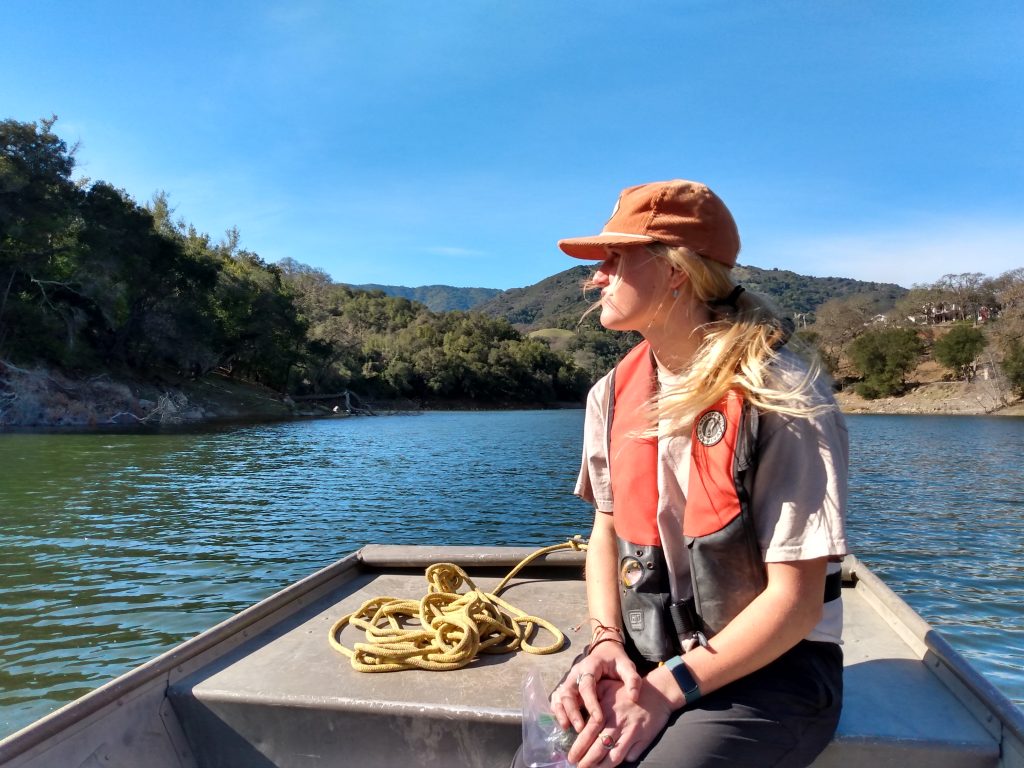Identifying Hotspots of Atmospheric Mercury Using Lichen in New Almaden Mining District


Peter and Brittney collected lichen around Almaden and Guadalupe Reservoirs by boat along with Mark Seelos at Valley Water
The historical New Almaden Mining district is contaminating the Guadalupe river watershed with high amounts of mercury. Even after attempts of remediating the old mine sites, mercury loads to the reservoirs still remain high. This is concerning because fish in the reservoirs are unsafe to eat due to their high mercury concentrations. So, we are attempting to locate the hotspots of local atmospheric mercury using lichen. Lichen can be indicators of atmospheric mercury because they do not have any roots and readily uptake mercury from the air. This is a much more cost-effective and long term representation of local atmospheric mercury than using air collectors. With the data we collect, we hope to provide insight as to where mercury emissions are high and further remediation is necessary.
